Cheesegraters and crystals
June 22, 2019 at 2:50 PM by Dr. Drang
Earlier this week, Stephen Hackett wrote a nice article on the design of the new Mac Pro’s grill and how it’s related to older and simpler Apple grill designs. It led me to Apple’s page on the design of the Pro and this language:
The lattice pattern on Mac Pro is based on a naturally occurring phenomenon in molecular crystal structures. A network of three-dimensional interlocking hemispheres, it increases the surface area, optimizing airflow and structural rigidity.
… The result is a lightweight lattice pattern that maximizes airflow while creating an extremely rigid structure.
This isn’t just marketing blather. The hole are a negative-space representation of a common atomic arrangement in metallic crystals, something that most engineers learn about in their introductory materials science class.
Atoms are hard to see, but crystal structures bear a geometric relationship to the packing of spheres, which are easy to see. We start with a layer of spheres and then set another layer on top of it, with the balls of the second layer fitting into valleys formed by the first layer.
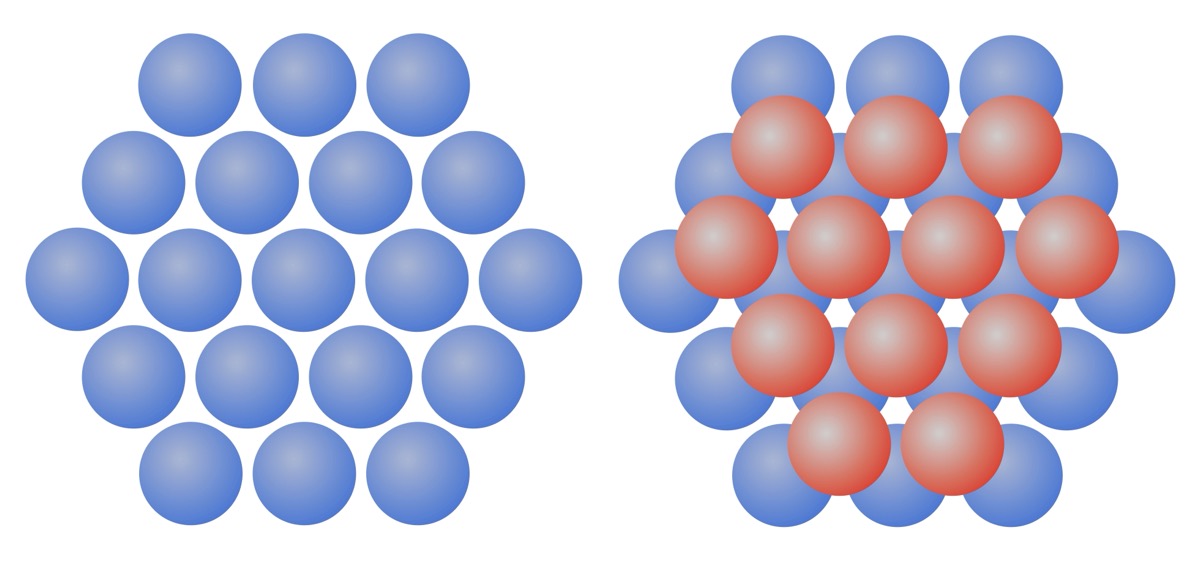
Two things about these drawings:
- First, when discussing sphere packing, the balls in each layer are normally shown touching each other because that gives the densest arrangement. I’ve shown them slightly separated for reasons that will become apparent later when we return to the Mac Pro grill.
- Second, each layer can be thought of as extending out infinitely in each direction. The sphere arrangement isn’t limited to the balls shown in the drawings.
We can now set a third layer on top of the second, but there are two ways to do it. In one (on the left), the balls of the third layer are directly above those of the first. In the other (right), the balls of the third layer are set in the openings that run through the first two layers.
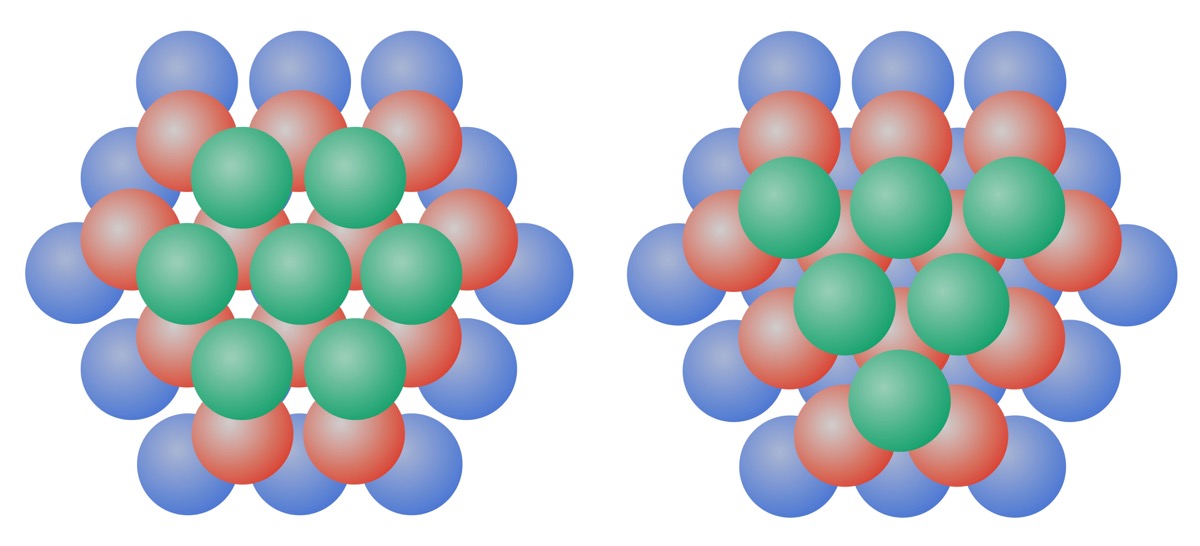
The left method is called the “hexagonal close packed” (hcp) structure, and the right is called “face-centered cubic” (fcc).
The hcp structure is fairly easy to visualize. Image a layer of seven balls arranged in a hexagon, then a layer of three, then a layer of seven again.
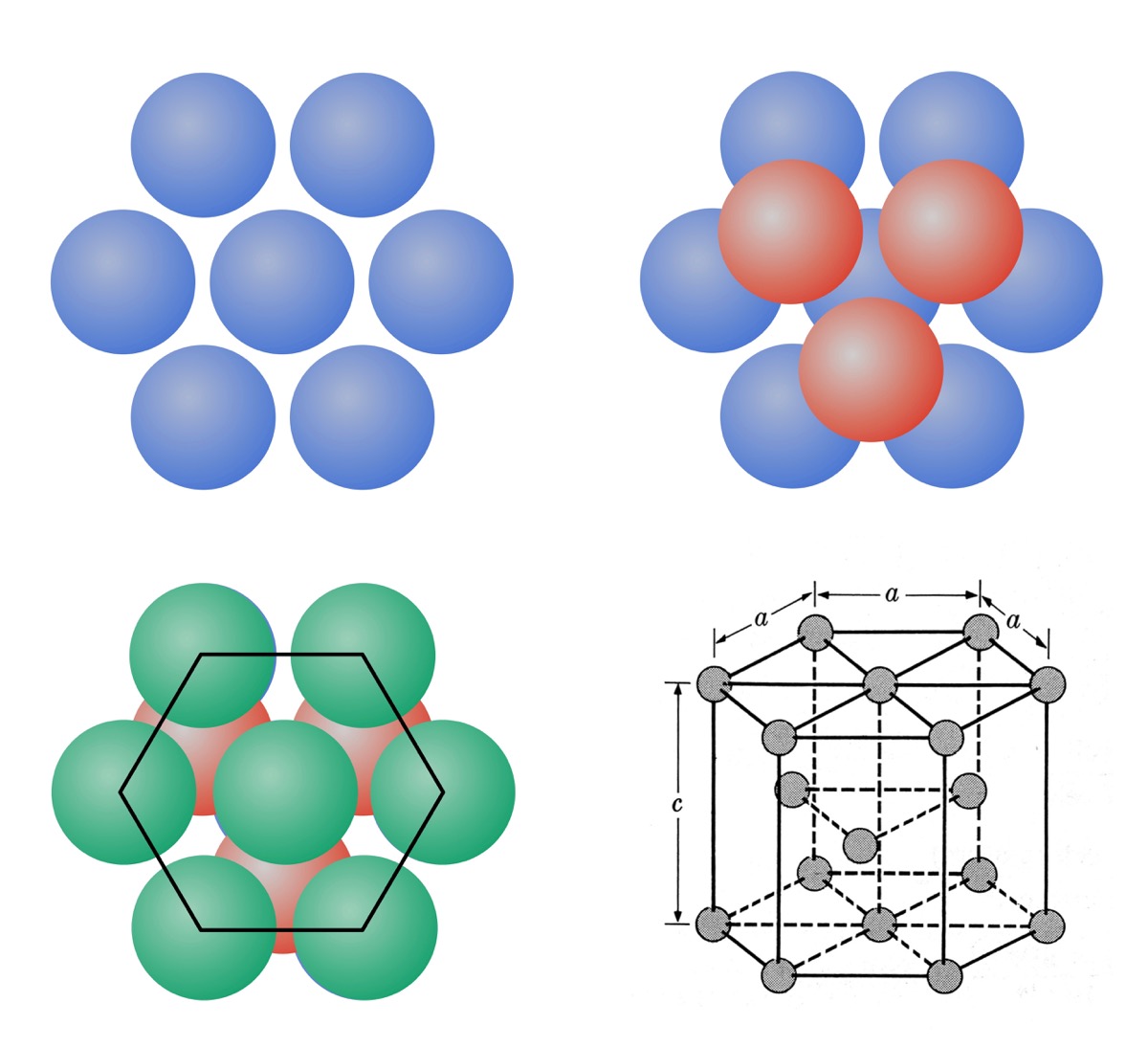
In materials science books, the hcp crystal structure, in which atoms arrange themselves like the spheres we’ve been looking at, is usually shown in an oblique view, like in the drawing at the lower right. That shows you the three layers and all the atom locations in a single image.
The fcc structure isn’t as obvious because it’s harder to visualize cubic arrangements in our layers of balls. I find it easiest to imagine four layers: three layers like those shown above and another that’s just like the green layer but placed below the blue layer.
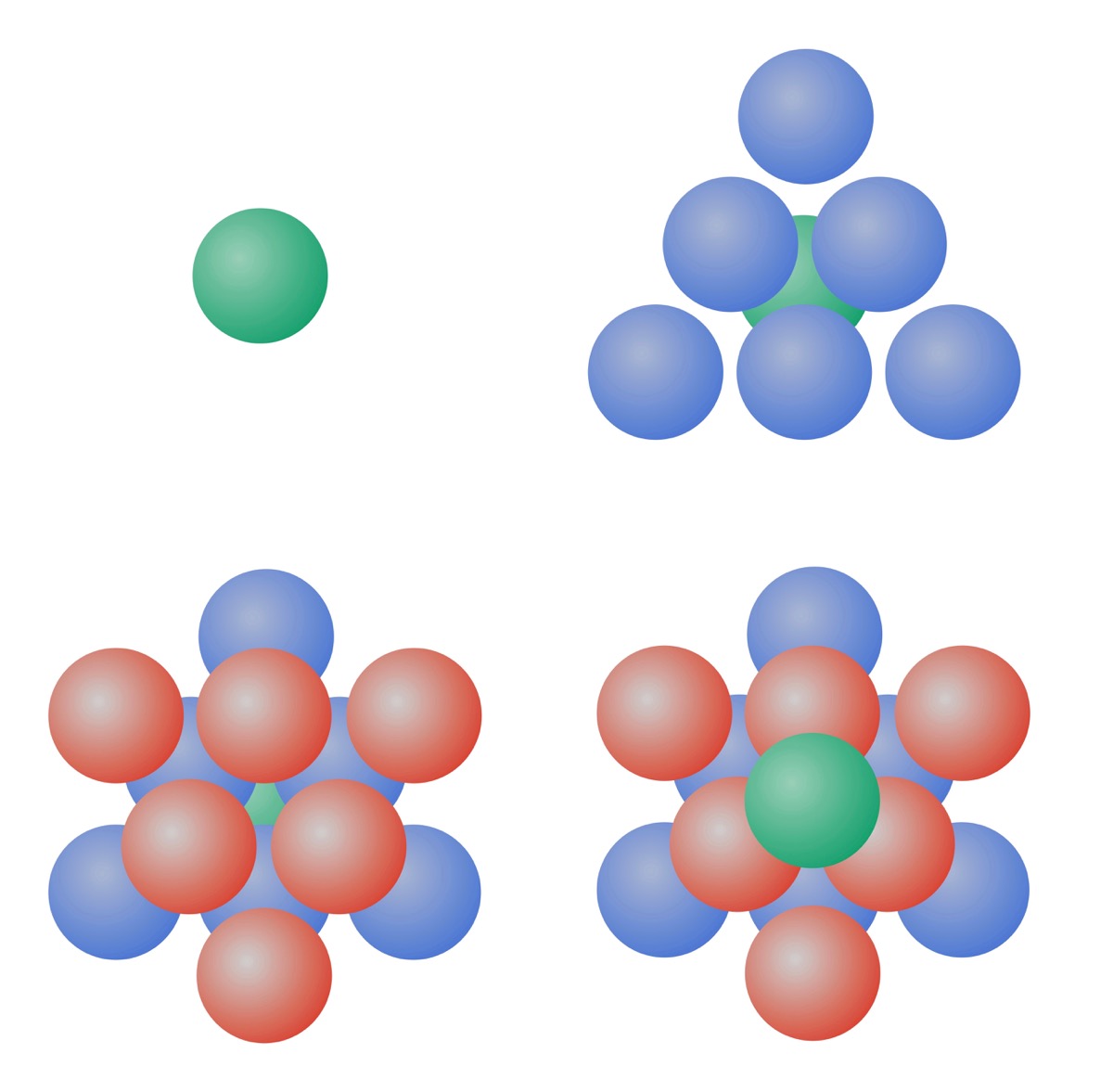
The trick is to recognize that the faces of the cube aren’t aligned with the layers of balls. We’re looking down the diagonal of a cube, with the green balls at the farthest and nearest corners.
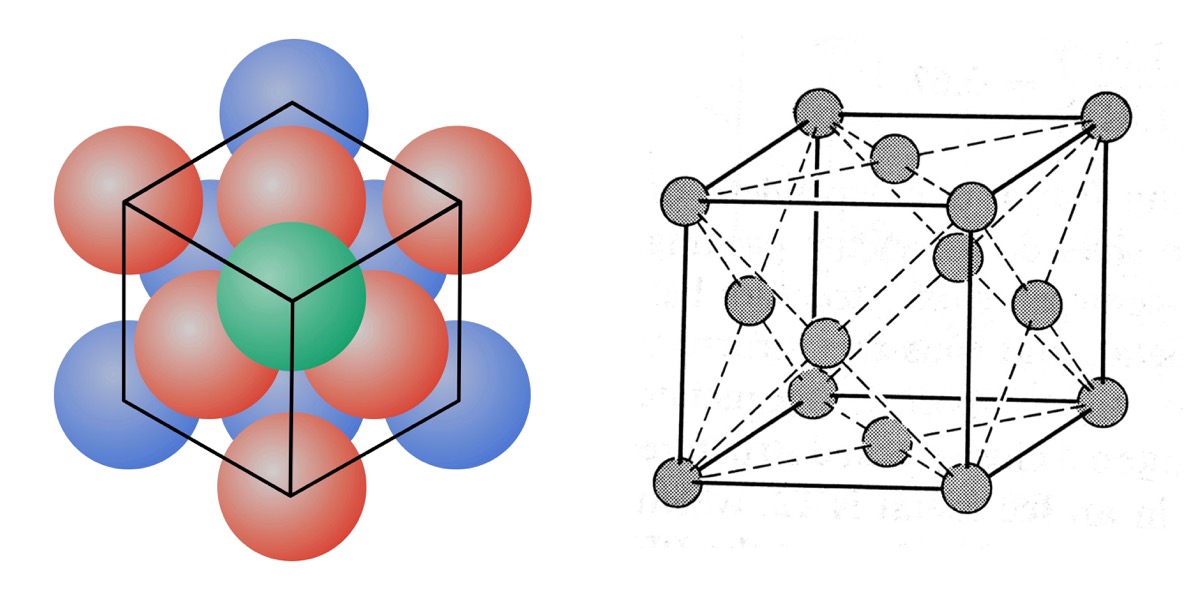
The drawing on the right is the fcc crystal structure as it would commonly be shown in a materials science book.
Now we can see how the cheesegrater grill of the Mac Pro is related to crystal structures. Here’s Apple’s animation of the machining process, which gives a good 3D view of the holes.
A frame capture from the video shows how the hemispherical holes machined into the aluminum plate are arranged like the blue and red layers in our sphere-packing drawings.. The holes on the near side are like the layer of red spheres, and the holes on the far side are like the layer of blue spheres.
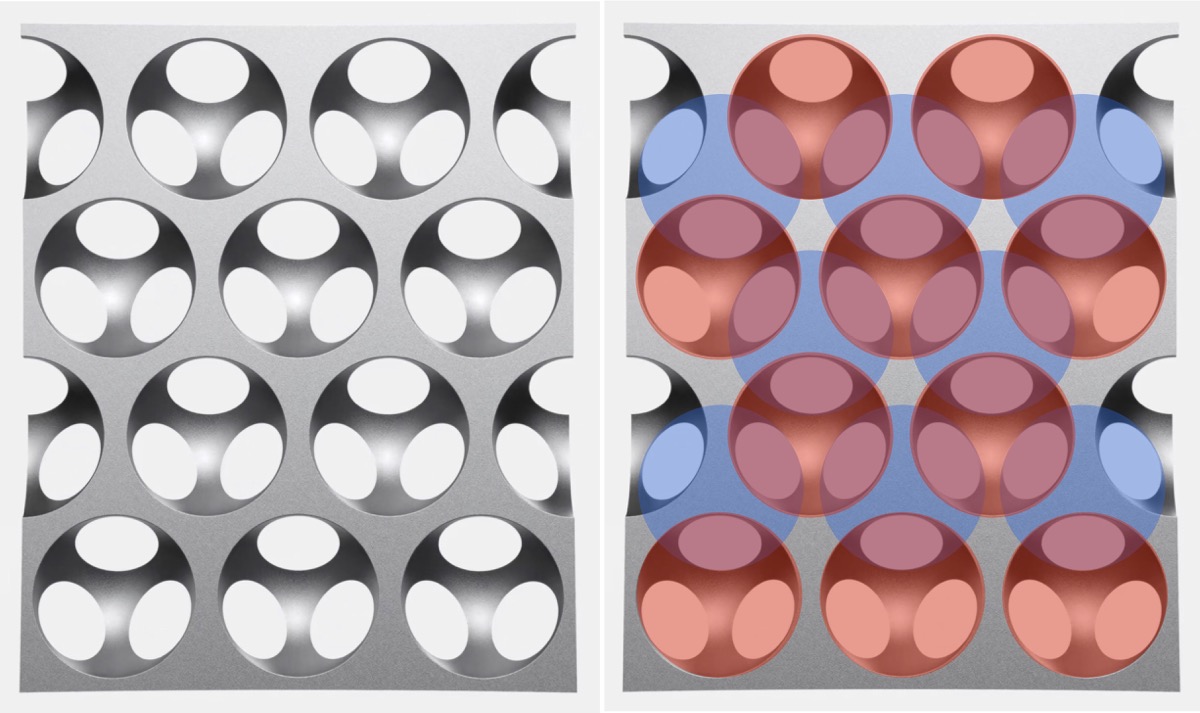
Now you can see why I drew the spheres of each layer slightly separated from one another. It was to match the separation of the holes on the two sides of the plate. The holes need to be separated to keep the grill from falling apart.
The other difference between the holes in the Mac Pro grill and the packing of spheres is that the holes from the two sides don’t simply touch, they intersect. Otherwise, there’d be no airflow.
So, the lattice pattern on Mac Pro really is “based on a naturally occurring phenomenon in molecular crystal structures.” I have no idea how this “maximizes airflow”—I suspect maximum airflow would come if the holes from one side were drilled straight through. But if the holes were drilled straight through it wouldn’t look as cool. Also, Stephen and I would have had nothing to write about.
One last thing, which I’m sure delights the metallurgists at Apple. Aluminum has an fcc structure, so the geometry of the grill mimics—in part, at least—the atomic arrangement of the material from which it’s made.

